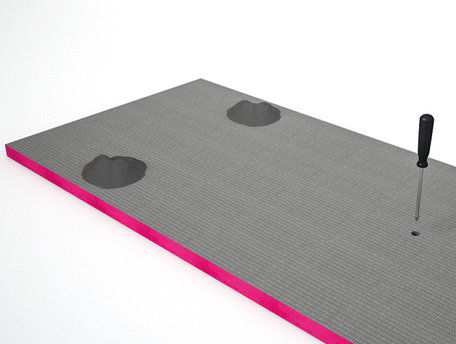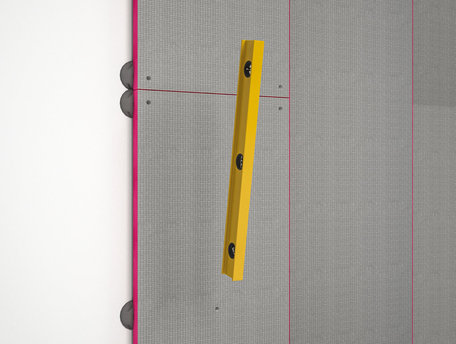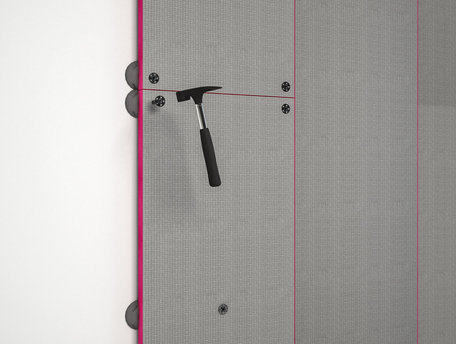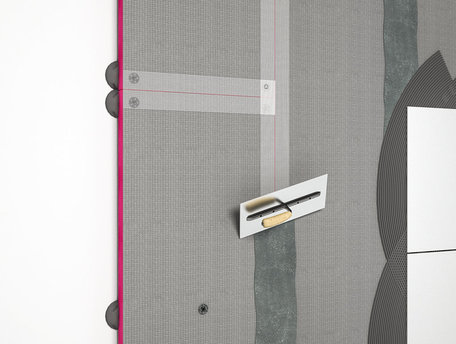This is how Jan did it:
Jan doesn't really like floor to ceiling tiles. So he worked with tiles and plaster. The substrate is Qboard® construction boards which he was able to apply his finishes to directly.
Smooth wall surfaces for an updated bathroom.
Not every wall is a straight wall - as you will see when you renovate your bathroom. Qboard® will come to your rescue. The construction boards can be applied directly to old tiles or very uneven substrates.
Mounted in just a few steps, Qboard® provides a smooth surface that is suitable for all wall coverings from tiles or fillers to plaster.
Qboard® construction boards have a watertight XPS core, they protect walls from moisture penetration and therefore prevent mould forming.

On uneven walls, the construction board must be fastened at appropriate points first. Please use tile or flexible adhesive for fastening.

Attach the Qboard® basiq construction board to the wall so that an even, perpendicular and flush surface is created for further processing.

Once the adhesive has set drill 8mm diameter holes so that you can fasten the construction board with Qboard® metal plugs later.

Finally, all construction board joints must be coverd with Qboard® glass-fibre tape and filled with tile adhesive. Use Qboard® sealing tape for wet areas (e.g. showers).
Clad your walls easily with these Qboard® products.
Please refer to the list of materials under Downloads for the tools you will need.
The core of the Qboard® consists of extruded polystyrene foam, a synthetic material that is waterproof, thermally insulating, light and very stable. This is coated in a fibreglass fabric and mortar so that tiles and other surface finishes can be applied directly to it.
Any conventional tools: knives, cutters, handsaws, electric jigsaws, electric circular saws or circular table saws. You can use sandpaper for precision work and if you need a hole, then just use a screwdriver.
Yes, it is possible to do so in principle, bearing in mind the application temperature limit for Qboard® construction boards, which is 75°C.
Lights above 50 Watt should be avoided.